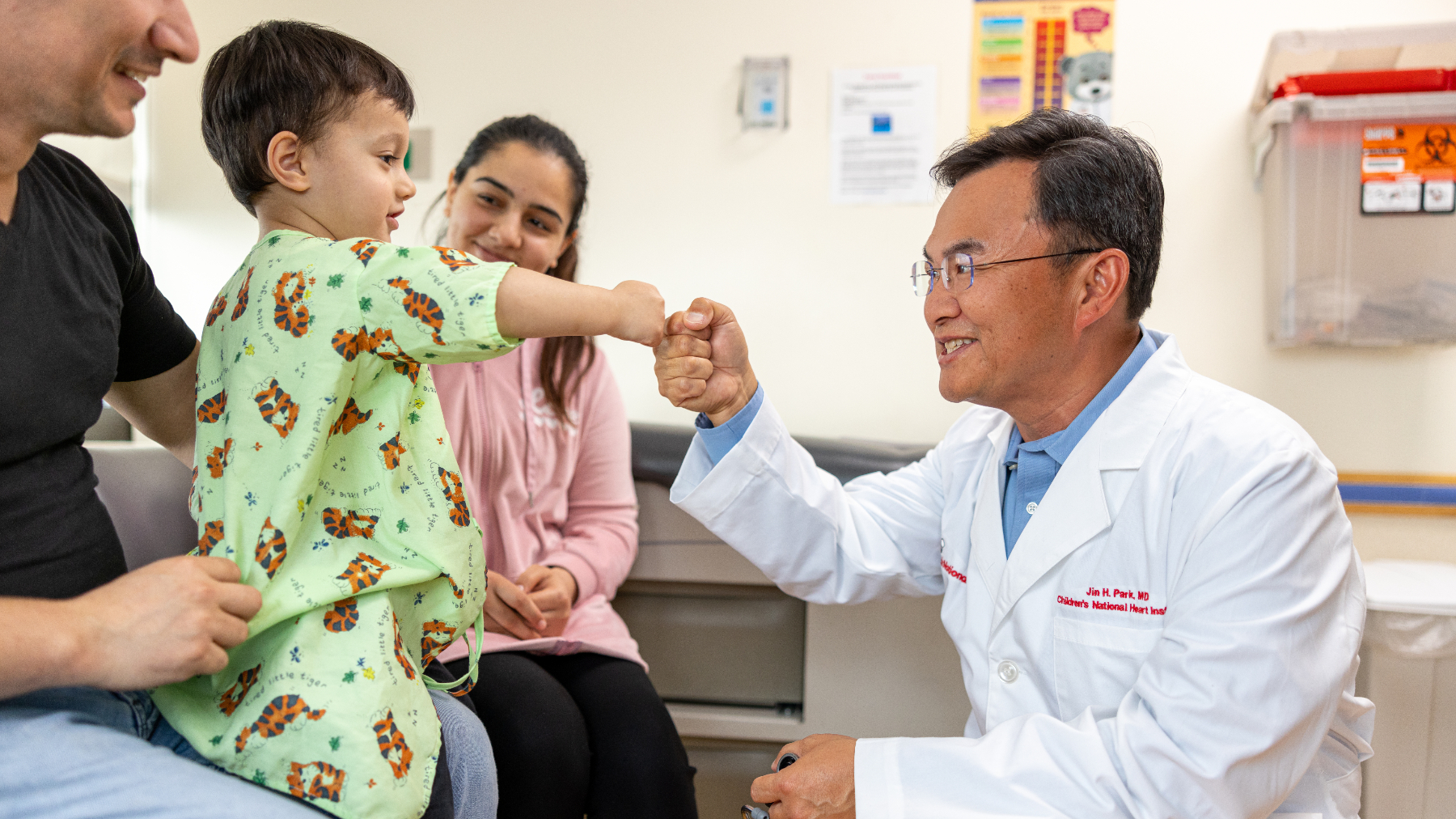Treatment
Pediatric Pulmonary Valve Treatment
The heart's valves work to control blood flow in and out of the heart. Pulmonary valve disease occurs when the pulmonary valves are not working properly, and blood cannot flow efficiently from the heart to the lungs. Your child may have a congenital heart defect affecting the pulmonary valve. At the Heart and Lung Center, we use the Melody® Transcatheter Pulmonary Valve Therapy, an advanced technology that helps children avoid surgery.
Transcatheter Pulmonary Valve Treatment
This complex treatment is a catheter-based procedure that can eliminate the need for immediate surgery in children with pulmonary valve disease. Many of our patients may have received a conduit (tube) in their hearts when they were younger, in order to restore proper blood flow. However, the valve may need to be replaced. Rather than performing another surgery to replace the conduit, we can use a catheterization procedure to insert the artificial valve. This minimally invasive procedure results in:
- Quicker recovery
- Less pain
- Avoiding or delaying surgery
For some patients, the transcatheter treatment may be all they need. Other patients may need additional surgery, but this treatment allows us to delay surgery for a number of years.
Melody Transcatheter Pulmonary Valve Therapy: What to Expect
Your child will be asleep for the entire procedure. Our experienced pediatric cardiac anesthesiologist will administer the anesthesia and monitor your child the entire time. Learn more about anesthesia at Children’s National.
Here is a general idea of what you can expect during and after the procedure, which lasts between 1 to 2 hours. We will:
- Insert the catheter into your child’s blood vessel, usually through the leg.
- Guide the catheter holding the Melody valve to your child’s heart.
- Deliver the valve and position it properly. The valve expands to fit into place and immediately begins directing blood flow.
- Remove the catheter and test the valve to ensure it is working properly
- Close the incision in the leg.
- Move your child to our comfortable Cardiac Procedure Recovery Unit, where an experienced nursing staff cares for your child as he or she recovers.
We will discuss the results of the procedure with you as well as discharge and recovery instructions. As always, we encourage you to contact us with any questions or concerns about your child’s recovery process.
Contact Us
For more information, call us at 1-202-476-2020.
Meet the Providers Who Perform Pulmonary Valve Treatments
Departments that Offer Pulmonary Valve Treatment

Heart and Lung Center
Our expert pediatric heart team, including more than 40 subspecialties, offer advanced heart care and excellent outcomes for thousands of children every year.

Help Kids and Make a Difference
Invest in future cures for some of life's most devastating diseases. Give today to help more children grow up stronger.







